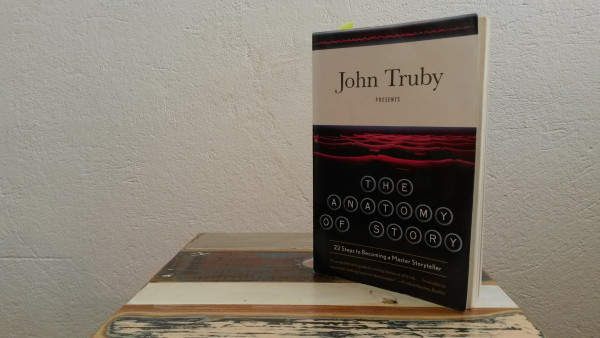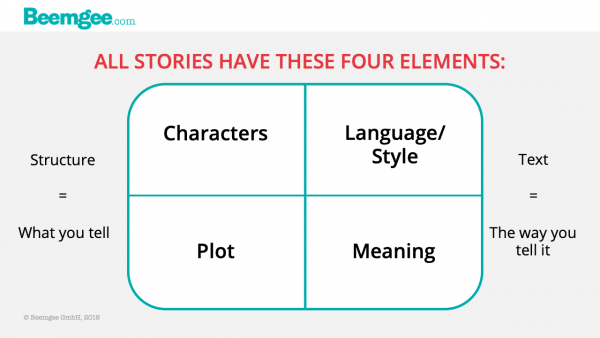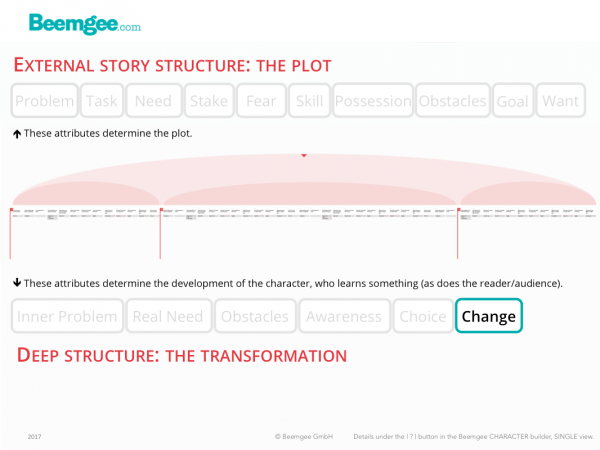
5 ways to cut your story down to size.
An author we know was offered a contract for her novel on the condition that she cut down the length from 600 manuscript pages down to 450. Most manuscripts can do with a little pruning; see our post how long is a story. But shortening the text by a quarter is a tall order.
Here’s some advice we were able to give her.
1. Remove backstory.
Many authors tend to tell too much about their heroine’s origins or childhood in the first couple of chapters. They think that the readers need to know where the character comes from or how the protagonist grew up in order to understand her properly. Actually, this is a fallacy. It can be counterproductive to explain too much about a main character for two reasons:
- Because making that character’s background specific removes the chance for the readers to identify with the character. An everyman type of character, someone blank (at least initially), can make it easier for the readers to put themselves in their shoes.
- Because readers like mystery. The audience does not want to be spoon-fed but likes to work things out for themselves. Characters that do strange things are fascinating, and the things they do appear strange mostly because we don’t (yet) understand their motivations. If we know everything already, understand their conscious and subconscious desires and needs, then that explains everything they do before they even do it, so there is less chance for them to surprise us.
(more…)

Guest post by Ali Luke.
 Ali Luke is a freelance writer and novelist who blogs about making the most of your writing time at Aliventures. For her best tips on making time to write, sign up for her email newsletter: you’ll receive a free copy of her mini ebook Time to Write: How to Fit More Writing Into Your Busy Life, Right Now.
Ali Luke is a freelance writer and novelist who blogs about making the most of your writing time at Aliventures. For her best tips on making time to write, sign up for her email newsletter: you’ll receive a free copy of her mini ebook Time to Write: How to Fit More Writing Into Your Busy Life, Right Now.
Pacing in fiction is how quickly—or slowly—the story progresses. The right pace for a story depends on its genre. If you’re reading a thriller, you’ll expect a fast-paced read with lots of action; if you’re reading a historical novel or epic fantasy, you might enjoy a slower pace with lots of emphasis on the world of the story.
It’s tough to get pacing spot-on when you’re drafting. It might take you years to write a book that takes just hours for someone to read. What feels “slow” to you as you write might actually go by pretty quickly on the page. Or, you may find that you repeat yourself, going over the same narrative ground multiple times, because you barely remembered what you wrote six months ago.
So, don’t worry about your pacing as you draft. Instead, address it in the redrafts—ideally, with the help of beta readers, but even simply reading over your full manuscript yourself can help you spot areas where the pace feels off.
Here’s what to look for when redrafting your work. (more…)
Some Points to Ponder.

Should we reassess the success of our storytelling?
The Evolution of Stories
In previous posts we described the evolutionary case for storytelling. There is a point to telling stories, a reason why we do it. Stories have a deep “biological” function. The idea is that the fact that we as a species tell each other stories is an evolutionary adaptation which has increased our ability to survive and thrive on this planet.
And while the argument seems very plausible to us, the description of humans as “the storytelling animal” also seems to us to indicate the typical hubris of our species. By calling ourselves that, we set ourselves apart from the other animals who share our planet, who ostensibly are not intelligent or gifted enough to be endowed with an instinct for narrative.
But who is to say that whales, wolves, or even bees don’t tell each other stories?
If an elephant never forgets, surely their memories are filled with events and occurrences? And who is to say there are no plots and characters in these reminiscences, no themes or motifs in those recollections, no dramaturgy to those pachiderm pasts? (more…)

How perceptive a character is of her surroundings may have dramaturgical relevance.
A character who is good at noticing small details may make a good spy or detective, so if you are developing a detective or spy you may want to give your character this ability. But whatever your character’s profession, stop at least once per scene and ask yourself,
What is a detail that only this character might notice?
Why is this important? Because their perceptions can make characters more interesting and vivid.
If a certain plot event hinges on a character perceiving some small detail or other, it may be a good idea to plant a foreshadowing moment long before the scene, to heighten the impact of the act of perception.
Furthermore, a character’s perception may influence how your audience understands and enjoys the entire story. How exactly depends on two important factors:
- narrator
- point of view
(more…)

A story has a beginning, a middle, and an end. How to avoid the ‘saggy middle’.
The middle bit of a story is really the story proper. It is usually the longest section. It comes after the introduction of the main character(s) and the setting up of the context, that is the world of the story, as well as the problems and themes the story deals with.
At the end of the first section – prior to what we’re here calling ‘the middle bit’ –, the protagonist has decided to set off on the story journey. Obviously, this does not have to be physical journey through a particular geography, but it does mean that the main character is somehow entering into new and unfamiliar terrain. In this sense, every story is a ‘fish out of water’ story. The heroine must leave the comfort zone in order for the audience to feel interest in her plight.
Some authors jump right into this unfamiliar territory, showing the run up to it in flashbacks. Anita Brookner’s heroine Edith Hope has already arrived in the Hotel du Lac in the first sentence of the novel. Gradually the reasons for her stay here are revealed as the reader progresses through the novel.
Nonetheless, for an author, it may be advisable to create a marked threshold where the protagonist enters into the alien territory of the middle bit. The exploration and transversal of this territory is what on a plot level the middle bit is about, and it takes up the greater part of the story journey. (more…)
 Today’s guest post is by author Stefan Emunds.
Today’s guest post is by author Stefan Emunds.
Stefan’s favorite genre is visionary fiction – stories that have an enlightenment dimension. Enlightenment and storytelling have interesting parallels, which prompted Stefan to write a book about storytelling – The Eight Crafts of Writing.
Get a glimpse of his approach to story craft in his article.
Art and Craft
Storytelling is both art and craft, authoring and writing, plotting and pantsing.
1.1 Art and Authoring
Art is creativity. Creativity requires receptivity to the Muse and its inspirations.
Inspirations arrive as thought-images, which writers put into words. How to turn thought-images into words and assemble those into a structured story with vivid characters and an engrossing world is a matter of craft and skill.
1.2 Craft and Writing
The literal meaning of Kung Fu is a discipline achieved through hard work and persistent practice. Writing is Kung Fu.
Craft gives form to inspirations. Forms limit. Writers love the artistic side of writing, less so crafting, in particular, Story Outline. Writers are prone to procrastinate crafting.
But no limitations, no story. No canvas, no painting. No net, no tennis.
Understanding the difference between freedom and dominion helps to appreciate the constraints of craft. Freedom is a means to an end. We want to be free to do something, for example, to write a book. That’s all there is to freedom. Dominion, on the other hand, is mastery of structure. (more…)

Nothing should be more important to an author than how their story makes the audience feel.
As an author, consider carefully the emotional journey of the reader or viewer as they progress through your narrative.
The audience experiences a sequence of emotions when engaged in a narrative. So narrative structure is a vital aspect of storytelling. The story should be touching the audience emotionally during every scene. Furthermore, each new scene should evoke a new feeling in order to remain fresh and surprising.
The author’s job is to make the audience feel empathy with the characters quickly, so that an emotional response to the characters’ situation is possible. Only this can lead to physical reactions like accelerated heartbeat when the story gets exciting. We have to care.
This “capturing” of the audience, making the reader or viewer rapt and enthralled, requires authors to create events that will show who the characters are and how they react to the problems they must face. The audience is more likely to feel with the characters as the plot unfolds when the characters’ reactions to events reveal something about who they really are – and how they might be similar to us.
One Journey to Spellbind Them All
Here we present a loose pattern that we think probably fits for any type of story, whatever genre or medium, however “literary” or “commercial”. It’s not prescriptive, just a rough checklist of the stages in the emotional journey the audience tacitly expects when they let themselves in on a story. The emotions are in more or less the order they might be evoked by any narrative.
Curiosity
(more…)

A blurb is a short text on the back of a paperback book designed to get you to purchase that book.
Received wisdom in the publishing industry has it that the cover design triggers browsing bookshoppers to pick up a particular book from the table, after which most people will turn it over to read what’s on the back. The short text on the back cover must then arouse so much interest about the content of the book that the impulse to purchase is triggered. Many customers might glance into the book first before actually going to the checkout.
The blurb text is also used to advertise the book in some print magazines and online shopping platforms. Again, the cover is likely to determine whether the blurb text gets read, but in most cases a sale is unlikely without the blurb having done its job of persuading the prospective customer that this is the right book for them.
Films also have blurbs, which are usually placed in combination with the film poster or a film still.
A blurb is therefore a marketing text. It is not a brief synopsis of the story! The blurb is not really designed to provide information, but to create interest. So the job of the blurb is actually to give just enough information to make withholding more information effective. Not saying quite as much as the recipient wants to know is how to arouse curiosity.
What this often boils down to is answering three key questions about the story in the blurb: (more…)

The essential elements of a story.
One of the many experts on storytelling to have attempted in a book to describe the essential elements of a story is John Truby.
In The Anatomy of Story (2007), Truby identifies 22 steps in any protagonist’s narrative, which may play into four aspects of the story: character, plot, story world, and moral argument. Thankfully, Truby does not insist that every story must follow the template strictly and contain all 22 steps. He does, however, identify as critical that the story show seven attributes of a main character and their storyline: (more…)

A synopsis is a summary of your story intended to be read by industry professionals.
This makes it a different text from a blurb, which is designed to be read by the public.
In both cases, you probably want the reader to purchase your story. But the reader of the blurb is merely buying a book or a movie ticket. The reader of the synopsis is taking a much greater risk if they decide to invest in your story.
An editor or publisher or a movie producer or director is accustomed to hearing story pitches. They want to find out as quickly as possible if your story is something that they might be interest in. So they need certain questions answered fast. These questions usually concern the premise(more…)

Where a character comes from may determine their values.
It is not always necessary to explain where a character comes from. Knowing their origin may not help the audience to understand a character.
But for some stories, origins can be vital.
As an example, take a contrast story like In The Heat Of The Night. Police Chief Bill Gillespie lives in the USA’s deep south and is a racist bigot. Such are his values, and for the purpose of this story also his internal problem. That he is a racist does not surprise the audience at all. It is completely credible given his origins. He comes from an area where, at the time at least, such bigotry was rife, and when the African American detective Virgil Tibbs turns up, their conflict is utterly plausible.
What we’re getting at here is that the values of a character have to be made plausible to the audience, which may be achieved by making the origins of that character explicit. In many stories, where a character comes from has to be fitting to what that character is like. Their origin produces the character’s values.
Setting, Origin, and Story World
Are we talking about setting? Well, only to an extent. (more…)
What does meaning mean? When is a tale meaningful? A few perspectives on imbuing your plot and characters with a subtext.
It’s no mean feat to make your audience feel they have learned something through your story.
Meaning is that which is intended or understood. The audience draws significance, relevance or profundity out of a story when it understands the deeper implications, reasonings and causes behind it. The meaning of a story depends on the standpoint. An author may mean something different from what the audience understands.
Let’s try to unravel this tricky but essential element of stories. We have noted that stories cannot help but exhibit four distinct elements:
- Characters
- Plot
- Style (aka language, or “voice”)
- Meaning
The interplay of characters and their actions form the plot, and all this is brought into a story structure, or narrative. Since there is always an author writing the novel or a team of people making the film, their stylistic choices determine the language of the work. In this post, we’ll skim the surface of the fourth element. Meaning is, of course, a broad term for something very hard to pinpoint.

We could add more story elements to the list. For instance, we have claimed that there is No Story Without Backstory. Furthermore, since the characters act within a time and place, there is always a story world. And in order to make the audience understand all this, there is always some measure of exposition. Then there is change or transformation, cause and effect, etc.
Let’s break down how we might look for the meaning of a story. (more…)
“Where’s the story set?”
The answer provides many clues about the story in question. While we tend to ask “where”, the setting actually encompasses somewhat more than location.
In Film, the term location is generally used to refer to scenes that are shot outdoors rather than on a sound stage or in the studio. In the specific context of filmmaking, the word “setting” is often used in scripts is a hyper-ordinate term to refer to both types of shooting, indoors in a controlled environment and out “on location”.
But for stories in general, the concept of setting refers to rather more. Let’s find out how setting relates to
- time
- genre
- story world
- premise
Time
Each Star Wars story reminds us of the setting before it even starts: “A long time ago in a galaxy far, far away”. In being reminiscent of “once upon a time”, the famous opening establishes that the setting is essentially a fairy tale with spaceships.
“Middle-earth” is a valid answer to the question of setting for The Lord of the Rings. One might be tempted to explain that Middle-earth is a fictitious realm, maybe say something about how its quasi-medieval technology relates to the actual Earth’s history, or possibly mention the connection to the Midgard of Norse mythology.
So in addition to describing physical space, both these examples of setting contain hints and associations about the time when the events of the story take place. (more…)

Conflict is the Lifeblood of Story.
In real life, conflict is something we generally want to avoid. Stories, on the other hand, require conflict. This discrepancy is an indicator of the underlying purpose of stories as a kind of training ground, a place where we learn to deal with conflict without having to suffer real-life consequences.
In this post we will look at:
- An Analogy
- Archetypal conflict in stories
- Conflict between characters
- Conflict within a character
- The central conflict
Along with language (in some form or other, be it as text or as the language of a medium, such as film) and meaning (intended by the author or understood by the recipient), characters and plot form the constituent parts of story. It is impossible to create a story that does not include these four components – even if the characters are one-dimensional and the plot has no structure. However, it is formally possible to compose a story with no conflict.
It just won’t be very interesting.
In terms of narrative, conflict is presented as a series of confrontations of increasing intensity. If there are no confrontations – no battles of wits or fists, no crossing of swords or sparring with words – there is little to hold the audience’ attention. To create confrontations, there must be at least a of conflict of interest between the characters.
Conflict does not occur at particular points in a story. It permeates the whole of it. It expresses the values transported by the story’s theme. It creates at least two options of choice, both of which must appear to some extent reasonable and justifiable to the protagonist, particularly at the moment of crisis.
(more…)
In essence, there are three kinds of opposition a character in a work of fiction may have to deal with:
- Character vs. character
- Character vs. nature
- Character vs. society
However, this way of categorising types of opposition is not equivalent to internal, external and antagonistic obstacles. Any of the three kinds of opposition listed above may be internal, external, or antagonistic. It depends on the story structure.
External opposition
In any story, the cast of characters will likely be diverse in such a way as to highlight the differences and conflicts of interests between the individuals. In some cases, certain roles may be expected or necessary parts of the surroundings, i.e. of the story world. In the story of a prisoner, it is implicit that there will be jailors or wardens, whose interest it will be to keep the prisoner in prison, which is in opposition or conflict with the prisoner’s desire for freedom.(more…)
Any event happens sometime and somewhere.
We have discussed time a great deal in this blog. Of course, the spatial dimension may be just as relevant.
The Story World
We may distinguish between the overall story world location and specific locations. By story world we refer to the overall setting and logical framework of the story. This is always unique to the story, although that becomes most obvious in stories set either in a fantasy world (like The Lord Of The Rings) or in stories that have a setting tightly bound to a geographical feature, such as Heart of Darkness, Apocalypse Now, or Deliverance. In each of these latter examples, a river – and the journey up or down it – provides the story world. Yet story world is more than just physical location. It describes an entire environment, including the ethical dimensions. Consider Wall Street or The Big Short, stories that describe a “world” where making money comes first.
The setting is usually established in the first part of the story, and the rest of the story should be true to what has been set up at the beginning.
Locations
Within the entirety of the “world” come the specific locations(more…)

A character in a story has values and passions. In short, an emotional stance. It’s this bundle of feelings that make the character a character.
By emotional stance we mean a value-set. This is particularly important when one considers that often stories show value-sets in conflict. The protagonist and in particular the protagonist’s journey to recognition and change may represent certain values. These will be in direct contrast to the antagonist’s values. The theme of the story presents one value-set as preferable over the other.
In many stories, the protagonist starts out with a value-set that is warped or flawed. Their real need is to become aware that their value-set is harmful or negative, probably ultimately selfish, and find a way to gain new values that are more social, cooperative and selfless. For the purpose of such a story, the values are initially expressed in the internal problem and by the end have gone through a change.
Values do not emerge in a vacuum, they are instilled by environment or culture. Stories exhibit cause and effect, and the values of each of the characters are no exception. The audience looks for the causes of a character’s emotional stance. By the very nature of emotions and values, their causes can be hard to pinpoint – while at the same time being somewhat obvious. In stories, at least.
Furthermore, values are emotional and therefore exist before they are articulated. A character becomes conscious of a value-set in the form of a system of beliefs. The beliefs are articulated by the character as convictions, and are determined by inner values. In some cases, the stated beliefs may actually be in conflict with the character’s deeper values, of which the character may not be entirely aware. Values tend to feel right to the individual, though they may actually be wrong for the larger community or society.
A character’s values have to be plausible to the audience, which may be achieved for instance giving the characters appropriate social backgrounds or origins and making these explicit. In many stories, a character’s upbringing or their origin is named or described in order to explain their emotional stance.
Alternatively, values may be caused by certain specific events in the history or background of a character, conveyed as backstory in the narrative. A particular circumstance, possibly a trauma, leads the character to feel a certain way about life and the world.
Character Values in Historical Stories
In historical stories the time-setting is particularly challenging in terms of the emotional stance of the characters. Much popular historical fiction may justly be termed anachronistic in that it has characters – especially female protagonists! – exhibiting values and beliefs which do not fit into the time. For example: In the Middle Ages, the advent of humanism had not occurred yet. There had been no Renaissance, no Descartes, no Kant, no French Revolution and no American Constitution. Where is a character in the Middle Ages supposed to get ideas, values and convictions from that today we take for granted? Ideas about inalienable rights such as liberty and equality or concepts such as individualism. People in the past had different values and belief systems from people today, and it is almost impossible to put ourselves in their shoes. Historical fiction that does not at least implicitly deal with this challenging issue is more likely to be clichéd and trivial.
Which does not mean that trivial historical stories can’t be wildly entertaining with strong emotional impact. After all, modern stories address the audience of today. It means simply that an author usually has some sort of attitude to the issue.
Photo by Wonderlane on Unsplash
Related function in the Beemgee story development tool:
Character Developer
Already using the author tool? If not, try it here:
If there is one thing that ALL stories have in common, it is change.

A story, pretty much by definition, describes a change. Indeed, every single scene does.
Within a story, what changes?
At the very least,
- one of the characters, usually the protagonist
- often other characters too
- sometimes the whole story-world
- who understands what – the perception of what is true or valuable
1 – The protagonist changes
We have said before that a protagonist is usually wiser at the end of the story than at the beginning. We have seen that this has something to do with the want, which – whether the character achieves it or not – is usually only attainable by causing a change. Often the change involves the character’s solving the internal problem, so the change takes place within the character. This involves the recognition of the necessity for change, i.e. the acceptance of the real need, and the struggle to achieve it. So all the incidents and events in the plot, the hindrances and obstacles the characters deal with, are in themselves not so very interesting. What interests the audience more is how these events and obstacles change the character.
Having said that, a story may well show no more change than the solving of an external problem. A story world is disturbed, but at the end returns to a similar state. For instance in a detective story, where the crime is solved but the protagonist does not really develop.
2 – Several characters change
Characters don’t change in a vacuum. They learn through interactions with each other. Relationships cause change. In many stories, subplots will tell of the characters that surround the protagonist, and their changes and developments may well cast light on various aspects of the story’s theme. Or perhaps the story is an ensemble piece, where it is not easy (or even necessary) to identify a main protagonist. Or it is a romance, or buddy-story, which apparently has two main characters. Whichever – some level of change usually occurs in all the main characters as a result of how they interact with each other.
There is, by the way, one often neglected archetype who also typically changes. This role is sometimes referred to as foil. We call it the role of the contrastor. The contrastor mirrors and contrasts the protagonist, like Han Solo to Luke Skywalker in Star Wars or the mother to the boy in Boyhood.
3 – The whole world changes
Quite possibly, the entire story-world may be different by the end of the story than it was at the beginning. Story-world as a concept refers to the scope of the world presented in the story, so if the field of action of the characters is small, the story-world is small too. If the story is an epic, the story-world will be big, a version of an entire world.
As an aside on this last point, consider the classical genres. Epics – again, almost by definition – describe a change in a whole world. In a way, so does tragedy, for at the end of the tragedy the world will have lost one or more of its population, since tragedy deals with the change from life to death.
Comedy seeks to describe a different fundamental change in the story-world. The typical structure of comedy, whether we are talking about Aristophanes or modern TV sitcoms, has a stable situation at the beginning which is disturbed by some event or problem. The disturbance causes first a lot of messy but generally non-life-threatening chaos which is resolved by a return to the original undisturbed situation. Even if the main characters end up married, for example, the story-world is brought back to its stable state.
The very serious point of comedy is to demonstrate a fundamental truth: the cyclical nature of change in the universe. Spring always returns, no matter how bleak the winter. Day always comes, no matter how dark the night. Change does not have to be final. Change can be cyclical. Change is life.
4 – The Perception of Truth
The most fundamental change that stories tend to describe is one of recognition of truth. What is not known at the beginning of the story is recognised and thus becomes known at the end. This is obvious in crime stories, but holds true for almost all other stories too. The story therefore amounts to an act of learning. Often the learning curve is observable in the protagonist, who tends to be wiser at the end than at the beginning.
But the point is really that the recipient, the reader or viewer, is actually the one doing the learning – through experiencing the story.
The audience changes.
At least, that’s the general idea. The story provides a physical, emotional and intellectual experience – physical when your heart beats faster or your palms sweat, emotional when you feel for the characters, and perhaps intellectual too if the story gives you pause for thought. If the story achieves none of these responses, then it has failed. An experience, again pretty much by definition, changes you. We learn through experience; so if you have changed, chances are it’s because you have learnt something.
Hence it is not only within the story that a change takes place. It takes place outside of the story as well, in the recipient.
Within some stories one may argue that no real change occurs – Alice does not obviously change due to her experience in Wonderland. But the reader has been taken on a wild journey, and the experience is likely to have left some sort of mark.
How does a story provide an experience?
By allowing the recipient, the audience or reader, to understand and feel change and transformation throughout the story. Every scene describes a change. The entire narrative shows a difference between the “before and after”. Stories have a tendency to symmetry: The beginning of the story makes clear what the state of the protagonist or the story world is before the story journey commences, and the end of the story has a corresponding scene or event that shows what the state is after.
For the author, then, the task is to clearly know the state of things for the protagonist, the cast of characters, the story world, and the audience at the end of the tale, and the state of things at the beginning of the tale. The greater the contrast, the better. Once these two points of reference are known, the author works out the many steps needed to get the protagonist, the cast of characters, the story world, and the audience from one state to the other.
There is a paradox here. The change that occurs is also an expression of new equilibrium. At a very basic level, story structure can be described as follows:
- an external problem (a change in the ordinary world of the protagonist) disturbs the equilibrium of the initial situation
- the disturbance is explored, a struggle ensues in which obstacles must be overcome
- the problem is understood and dealt with, creating a new equilibrium or resolution
So change is all-pervasive in stories, within them in the form of character development, and without in the form of audience understanding. And that is not even to consider the transformational power of telling a story, when the act of telling the story brings about change in the author.
Read here how change is important for every single scene, though we prefer to call them plot events.
Related function in the Beemgee story development tool:
Character Developer
Not developing your story yet? Click here:
More than any other part of a story, the beginning has to grab the audience’ or reader’s attention.
In the beginning, before audience or readers are emotionally involved and concerned about the fates of the characters, the danger of them turning away from the story is greatest.
Now, there’s more to a beginning than the kick-off event. While being an attention grabber, the entire first section of a story also has to establish the following:
- Who the story is about
- What the story is about
- Where the story takes place
That sounds self-evident, but all the elements needed to answer those three points amount to an awful lot of information. And at this stage, the audience or readers are not yet patient or forgiving, because they are not yet emotionally hooked.
In this post we will:
- look at the who/what/where
- determine the three key events that the first section of a story must include
- provide a checklist of all the elements the first part of a story requires
Who/what/where
(more…)

















